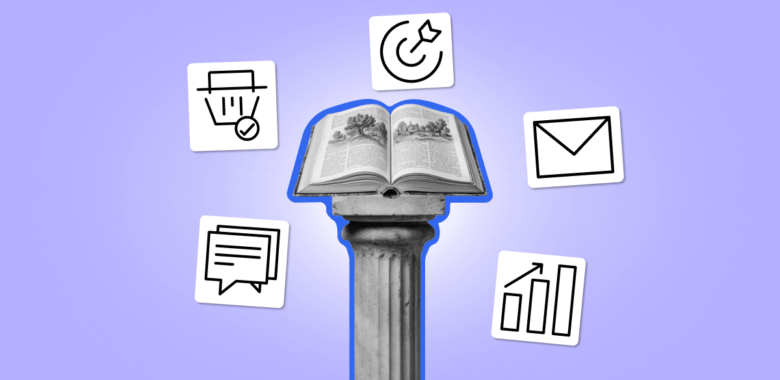Tips for repurposing content
There are several things worth going over before you hash out a content repurposing strategy.
-
When to repurpose content
When you have a backlog of content already, you can start repurposing it right away. Focus on the better-performing pieces and see how they do on other channels (e.g. how your repurposed blog posts perform when turned into infographics on Instagram).
Repurposing content matters when you are starting to use a new social media channel. Most of these will reward you for an initial spike of activity — so simply adapting the content you already have will make that spike easier to achieve.
-
What content to repurpose
Your best-performing content should be repurposed first, before you move on to your evergreen content (i.e. content that stays relevant over a long period of time). Time-sensitive pieces (like updates and news) should be repurposed right away — they will get old fast.
You can also give your old pieces a new look and repurpose them as well. Go over your older articles, update the facts, quotes, design elements (such as infographics), re-publish them — and then repurpose them for other channels.
Let’s say you have a blog article on how public relations and email marketing work together. In essence, it’s an evergreen post, but that doesn’t mean you can’t drive additional traffic to it a year or two after it’s been published. However, the bulk of work here will boil down to updating use cases — and adapting copy accordingly to reflect new trends.
-
How to prioritize content for repurposing
Should it be your old content or new content? There’s no one right answer — it will depend on your goals. Repurposing older content makes sense if you want to attract additional traffic to pieces that once did well but are now at a content decay stage. Repurposing newer content works better if you want to extend your reach and raise brand awareness.
-
How to integrate content repurposing into your workflow
The best way to easily repurpose content is to keep it in mind during the creation stage. For example, if your blog and Twitter or LinkedIn are your most popular and oldest channels, you should craft your blog article in such a way that it can be easily replicated as a tweet or LinkedIn post.
Think about the main hook, how easily the structure can be carried over, and even which accompanying graphics can grab attention as an in-post image. Creating social posts after you are done with the blog post will be much easier this way.
-
Which channels to target when repurposing content
We’ll say right away you shouldn’t target all the existing channels, or, God forbid, create social media accounts on platforms where you have no presence solely to repurpose content. Otherwise repurposing becomes a gigantic effort bearing little to no fruit.
Target just two or three channels that work best for your business. This has three main benefits:
- You won’t be putting a strain on yourself by repurposing something 10 times.
- You will be certain that your presence on these platforms (e.g. how long you have had an account, how many posts you’ve published) will attract some traffic.
- Content repurposing will be a part of your overall marketing strategy, on top of creating unique posts for these channels.










